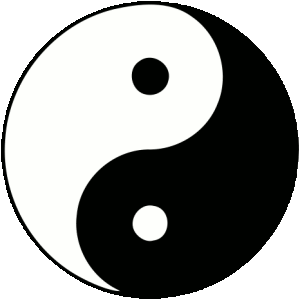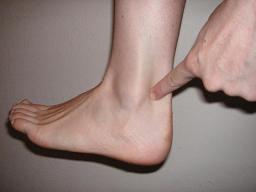A warm welcome to our free teleseminar this morning. You’re here with Rebecca Mar Young and Naomi Abeshouse from Acubirth.
We will be introducing ourselves, telling you our story of how we came from treating pregnant women at our Red Tent Health Centre to teaching midwives and birth workers Acubirth techniques face-to-face and online, and how this now lets us help so many more women than we could ever hope to reach individually.
In this talk you will:
- Discover the biggest mistake a woman can make that can adversely affect her baby’s birth position
- Learn the best acupressure point to encourage her baby into the ultimate birthing position
- Be introduced to ancient wisdom, why it is important and how it can get women in touch with their bodies
- Find out how Chinese medicine can transform your midwifery toolkit
- Discover the importance of touch and how essential it is during birth
- Hear inspiring pregnancy and birthing stories where situations have been incredibly turned around using acupressure
The following images and information relate to the call. Please follow along.
Spleen-6 (SP-6) Inner ankle
This acupressure point is contraindicated up until week 36.
Location: This point is located 3 cun (four of the woman’s finger widths) directly superior to the tip of the medial malleolus on the posterior border of the tibia.
Slide your finger off the edge of the shin bone, towards the inside of the leg. It is useful to press on the tibia when first locating this point as pressing on this bone produces a very different sensation from the acupressure point.
How to use it: Direct pressure can be applied with a thumb or index finger to produce an intense, tender sensation, or a dull, achy feeling.
During posterior birth or early labour (with frequent contractions): This acupressure point regulates and strengthen contractions. First, we try to generate a good solid contraction to create the greatest potential for the baby to be able to turn, and then we use BL-60 (see below) to try and turn the baby.
Apply firm acupressure on both ankles for three to five minutes between contractions.
During pre-labour with less frequent or mild contractions: We are really trying to increase contraction strength, so you could try applying the point just before the start of the contraction and hold during the length of the contraction. Do this for several contractions. Once you have some stronger contractions, you can use them to try and turn the baby using BL-60.
After applying the acupressure to this point during labour, many women report that their next contraction is quite different – often it feels much stronger or more intense.
Bladder-60 (BL-60)
Location: In the depression midway between the tip of the lateral malleolus and the outer edge of the Achilles tendon.
It’s midway between the highest point of your outside ankle bone and the Achilles tendon. You can feel and often see a natural dip there, though not always in pregnant women with oedema!
You can apply pressure to this point by bringing your hands around the back of the foot and gripping the woman’s ankles, applying firm pressure with your thumbs.
Please note: This point doesn’t produce the same kind of intensity with pressure that most of the other points give.
How to use it: This point can be used daily if OP is detected late in the pregnancy (from 38–39 weeks) to encourage the baby into the best position.
From 38–39 weeks (no signs of labour): Hold the points for 3 minutes daily.
Early labour & during birth: Hold the points during a strong contraction. Use SP-6 to encourage a stronger contraction.
Use SP-6 between contractions, and BL-60 during the contraction.
This point is mostly used in the first stage of labour. It also has a descending action and can be used to encourage the baby to descend and put pressure on the cervix to aid its thinning and dilation.
Research regarding acupressure and birth, as well as acupuncture during pregnancy, birth and postnatally:
1. Effects of acupressure at the Sanyinjiao point (SP6) on the process of active phase of labor in nulliparas women. Maryam Kashanian, MD: Associate professor of Iran University of Medical Sciences, Department of Obstetrics & Gynecology. Shadab Shahali, MS: Iran University of Medical Sciences, Department of Midwifery.
Acupressure for 30 minutes when a nulliparas woman was 3–4 cm dilated on SP-6 reduced labour times, reduced the c-section rate and decreased labour pain. It was a single blind controlled trial with 60 women in each group. The results are statistically significant, compared with the control group who received a light touch at this point for 30 minutes.
2. Caring for the pregnant woman and her baby in a changing maternity service environment: the role of acupuncture. Smith C, Dahlen H. Acupuncture Med. 2009 Sep;27(3):123–5.
Research evaluating acupuncture during the antenatal period, labour preparation and birthing is small in quantity, but there are encouraging findings suggesting acupuncture may be safe and effective.
3. Acupuncture treatment of pregnant women with low back and pelvic pain—an intervention study. Scand J Caring Sci. 2010 Mar;24(1):175-82. Epub 2010 Jan 20. Ekdahl L, Petersson K.
Found significant decrease in pain especially for later stages of pregnancy.
4. Effects of acupuncture during labor and delivery in a U.S. hospital setting: a case-control pilot study. Citkovitz C, Klimenko E, Bolyai M, Applewhite L, Julliard K, Weiner Z. J Altern Complement Med. 2009 May;15(5):501-5.
Acupuncture patients underwent significantly fewer caesarean sections (7% versus 20%, p = 0.004).
We will provide updated research in our future newsletters and talks.
Disclaimer:
Before adopting the clinical skills demonstrated at this workshop, you should ensure that your employment contract permits their use. They are presented for your consideration as an optional adjunct to your existing professional clinical practices and protocols. Since individual cases are variable, any decision you make to use these skills in a particular case should be made after considering whether a deviation from standard practice could be a risk to the patient’s wellbeing.





